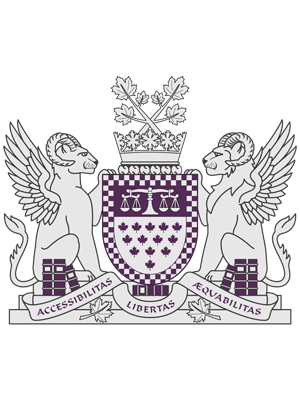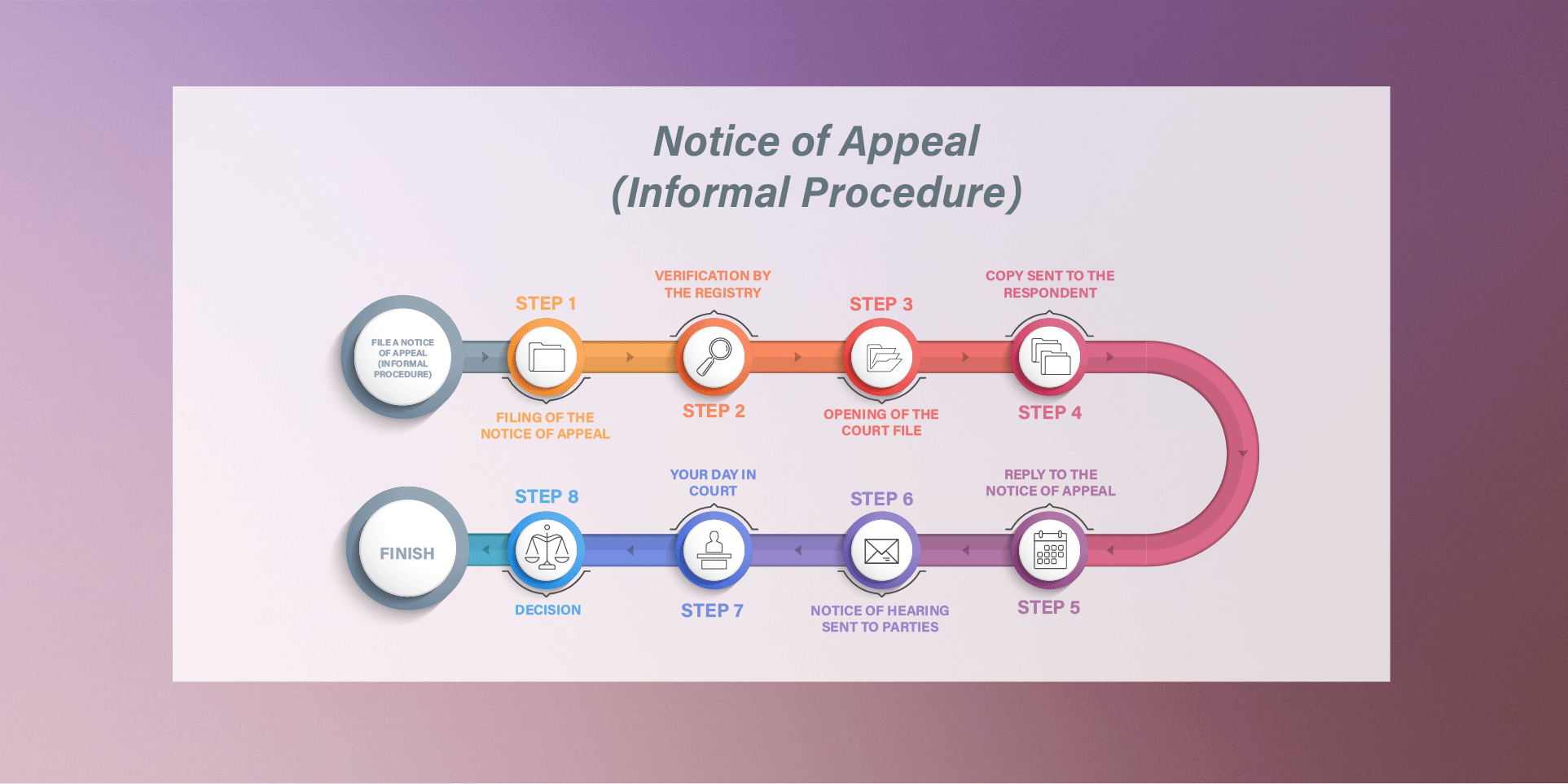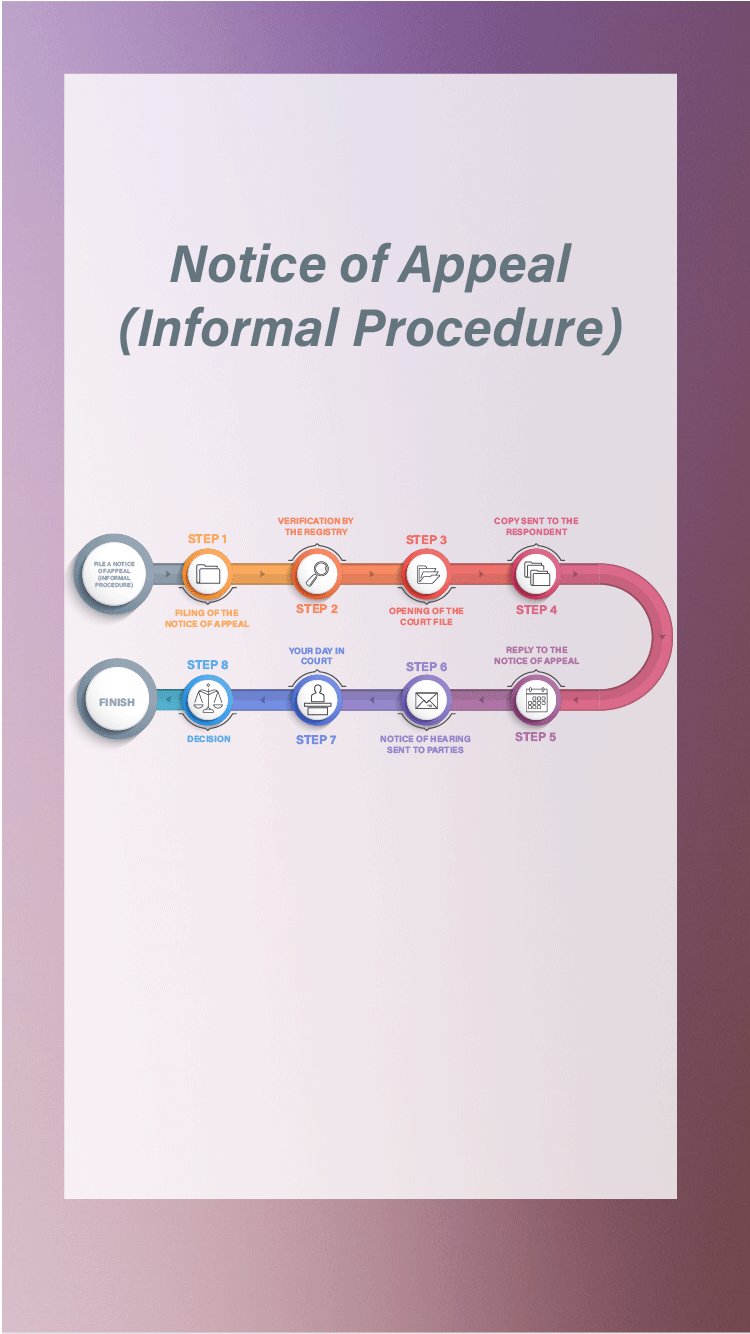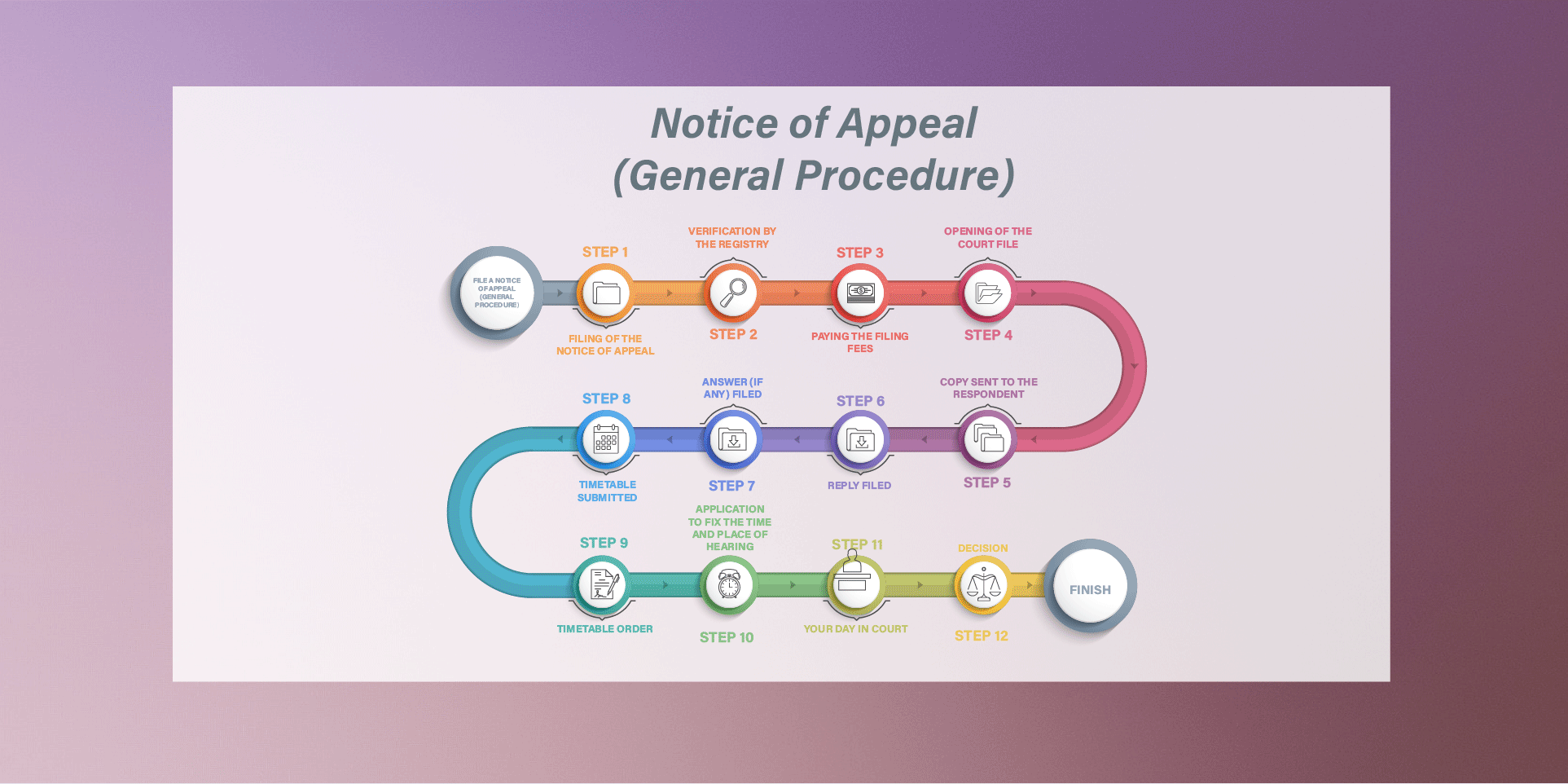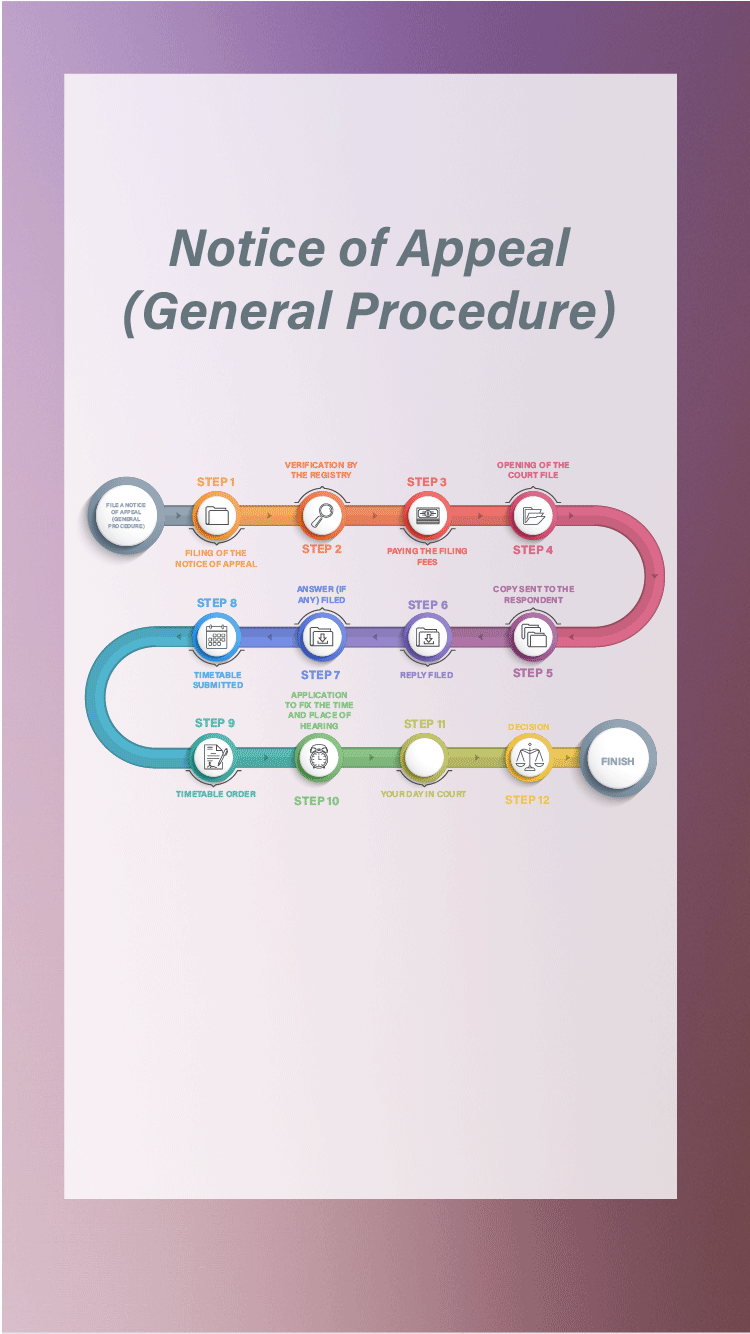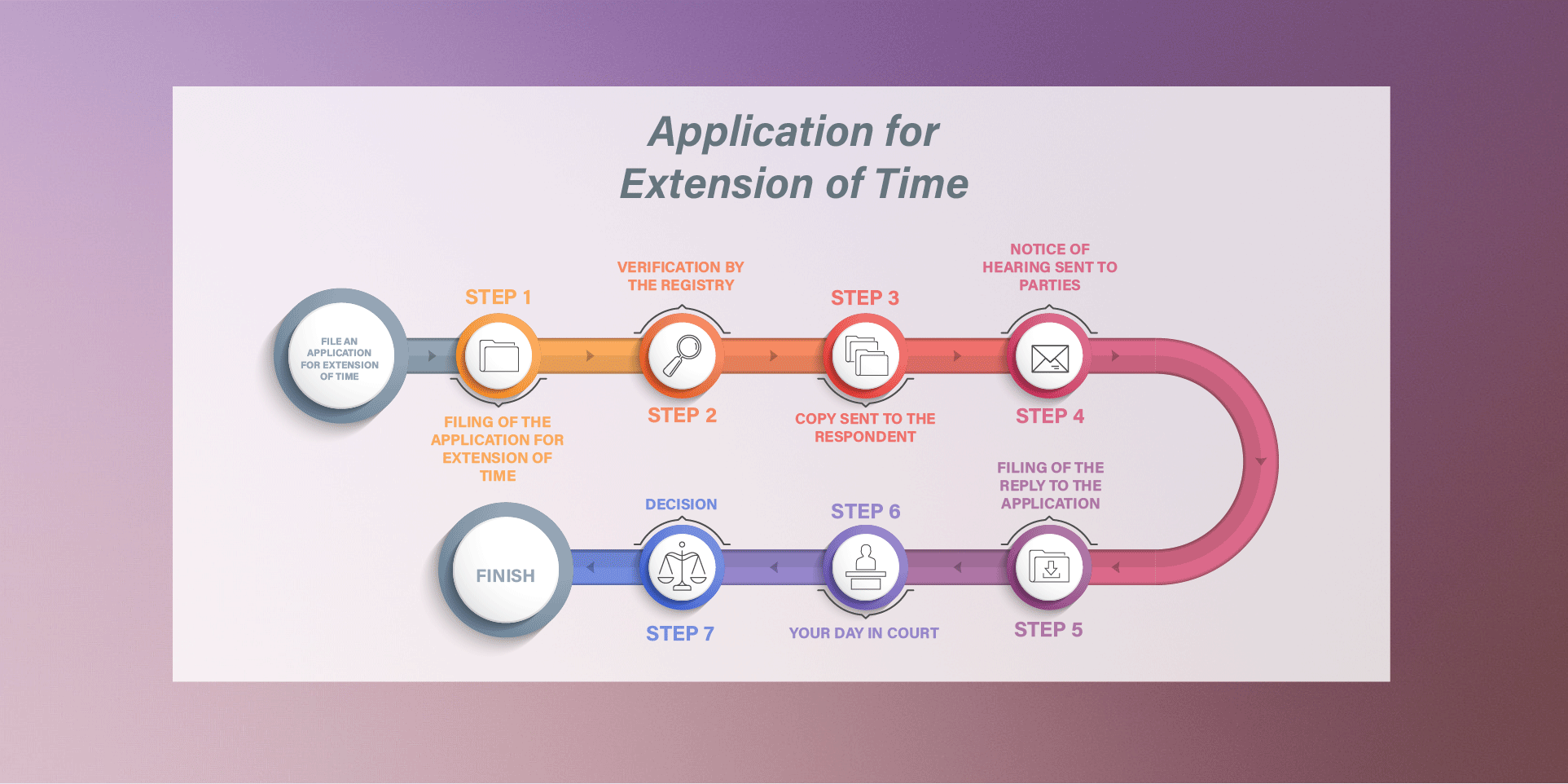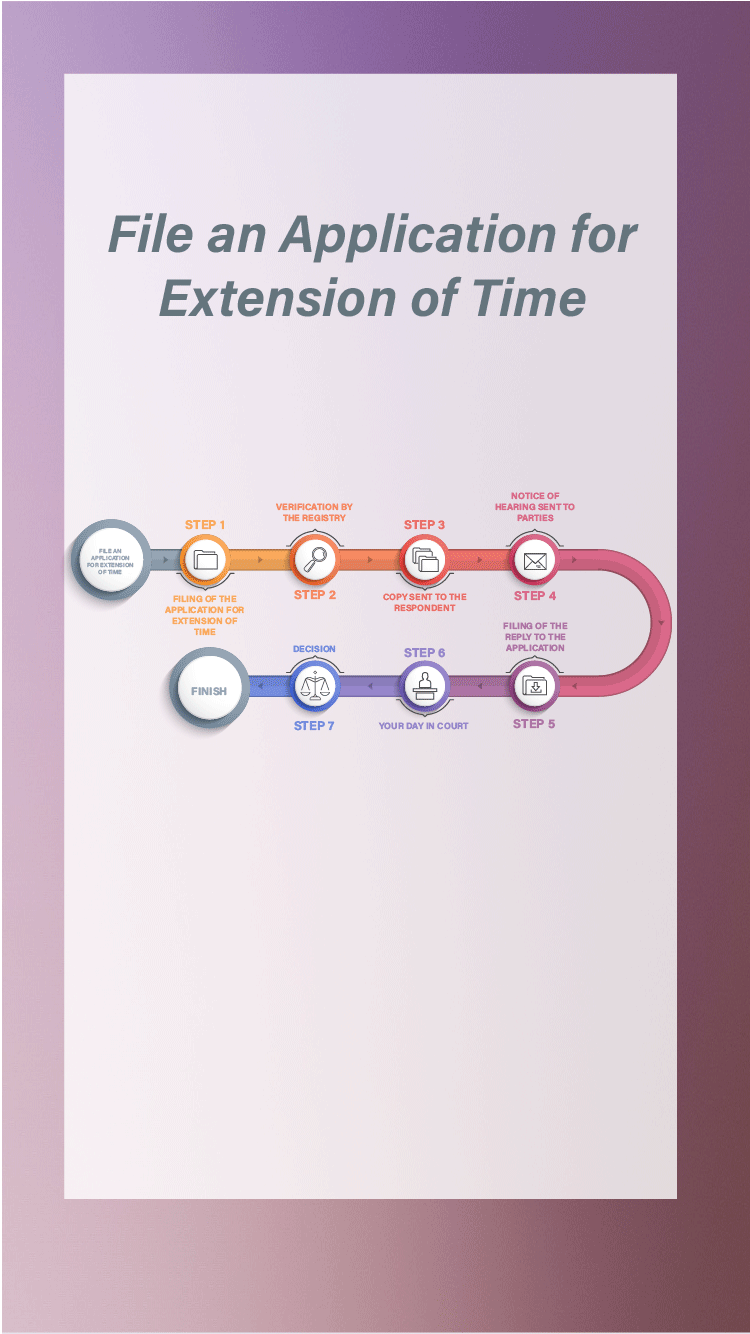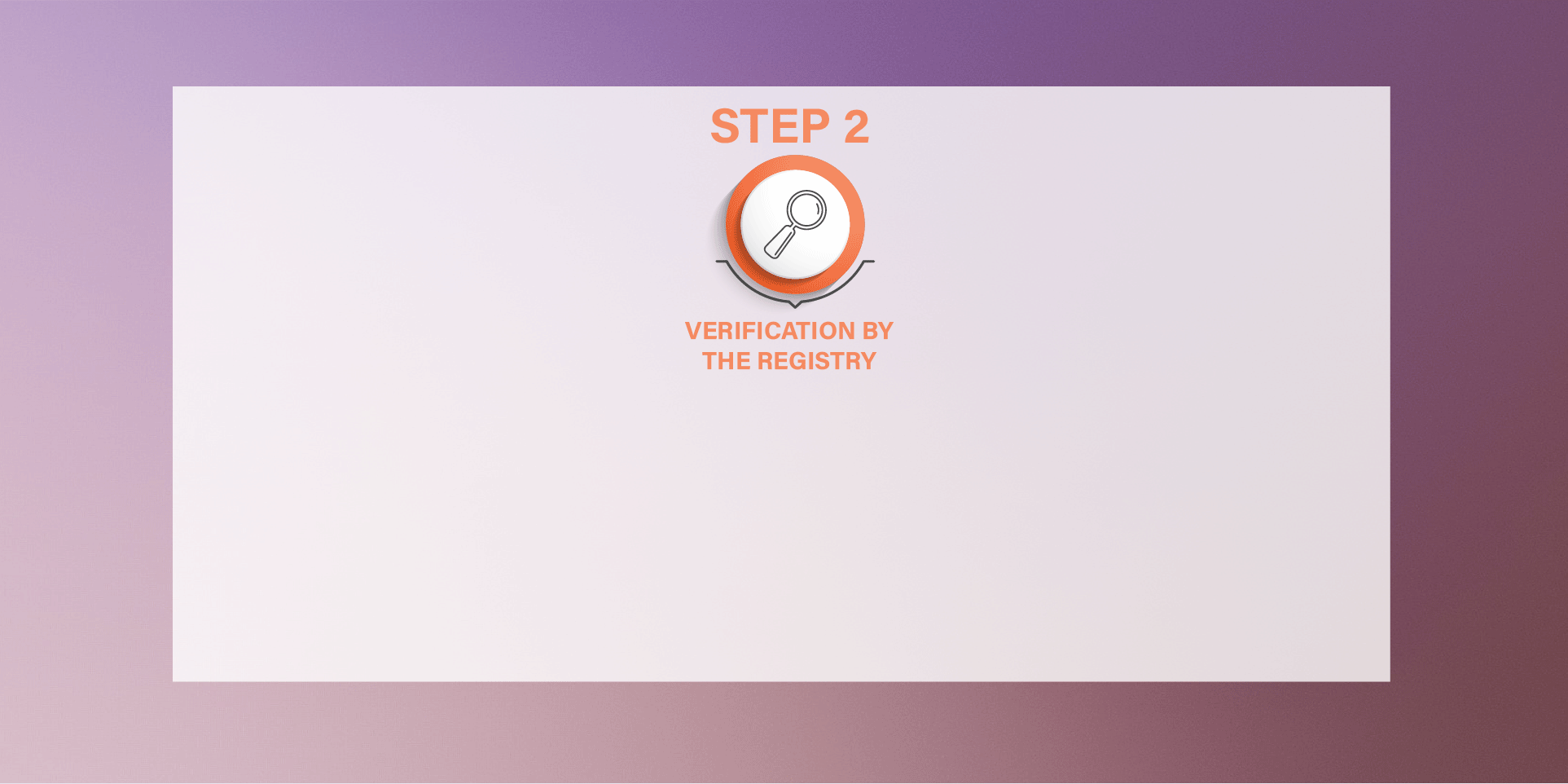The first step is to send your Notice of Appeal to the Court. You may do so electronically, in-person, by mail or by fax. The Notice of Appeal may be in the form set out in Schedule 4 , but a letter is also acceptable as long as it sets out, in general terms, the reasons for the appeal and the relevant facts such as the date of the assessment or assessments, the taxation years or GST periods at issue. You must also include your address for service and you are encouraged to provide your email and phone number.
Roadmaps
Notice to Appeal (Informal Procedure)
An overview of the Notice of Appeal (Informal Procedure) process is shown in an image. Circles indicate each of the following steps:
- Step 1: Filing of the Notice of Appeal
- Step 2: Verification by the Registry
- Step 3: Opening of the court file
- Step 4: Copy sent to the Respondent
- Step 5: Reply to the Notice of Appeal
- Step 6: Notice of Hearing sent to parties
- Step 7: Your Day in Court
- Step 8: Decision
One last circle indicates ‘finish’.
Notice to Appeal (General Procedure)
An overview of the Notice of Appeal (General Procedure) process is shown in an image. Circles indicate each of the following steps:
- Step 1: Filing of the Notice of Appeal
- Step 2: Verification by the Registry
- Step 3: Paying the filing fees
- Step 4: Opening of the court file
- Step 5: Copy sent to the Respondent
- Step 6: Reply filed
- Step 7: Answer (if any) filed
- Step 8: Timetable submitted
- Step 9: Timetable order
- Step 10: Application to fix the time and place of hearing
- Step 11: Your Day in Court
- Step 12: Decision
One last circle indicates ‘finish’.
Application for Extension of Time
An overview of the Application for extension of time process is shown in an image. Circles indicate each of the following steps:
- Step 1: Filing of the Application for extension of time
- Step 2: Verification by the Registry
- Step 3: Copy sent to the Respondent
- Step 4: Notice of Hearing sent to parties
- Step 5: Filing of the reply to the application
- Step 6: Your Day in Court
- Step 7: Decision
One last circle indicates ‘finish’.
